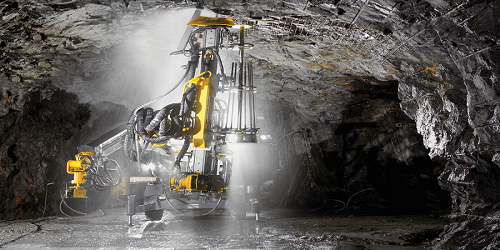The mining industry has a lot to gain from the connectivity that the IoT delivers. Mining operations around the world are on an automation curve – they are applying technologies to automate their key functions to gain efficiencies in production. Productivity and safety are two key drivers in mining. Removing people from the mine site and into remote operating centres helps companies achieve both. By leveraging IoT technologies, the interaction between people, process, data and things can be securely and reliably monitored, modified and maintained remotely. Through IoT, this next level of optimisation can be achieved for a single mine or a federation of mines, rail and ports. IoT enables the digitisation of the entire mining supply chain for optimisation.
IoT WILL HELP IN FIVE KEY AREAS OF MINING
Automation Advances – The Internet of Things allows mining company owners to connect the latest innovations, technology, and development of virtually everything associated with the operation. Products that were once considered stand-alone elements like vehicles, heavy mining equipment, and even the sonar used to assess the potential of a drilling site can all integrate and work together using the Internet of Things. This seamless experience means more data and less guesswork.
Safe Mining – Technology in general has eliminated some of the risk from the mining process. Even so, there are still dangers that can claim lives, including the collapse of unstable shafts or injuries resulting from the operation of mining trucks. IoT helps to further reduce the risk associated with every step of the mining process. Real-time data can help miners predict where issues might occur, and allows for adjustments to be made before anything can go wrong.
Predictive Maintenance – The nature of a fully integrated network makes it easier to monitor every aspect of the operation. That includes detecting wear on key pieces of equipment and projecting when repairs or maintenance needs to take place. Depending on the structure of the network, some equipment may be so intuitive that it is capable of scheduling its own maintenance and repair while shifting tasks to other equipment included in the network. This one element is important, since properly maintained equipment translates into greater productivity and safety.
Time Saving – IoT take a lot of the guesswork out of developing and maintaining a mine site. The data that can be gathered before the first digging takes place ensures that the process can be managed quickly, easily, and with reduced risk. The fact that driverless vehicles and other forms of automation are used means the mines can operate around the clock, allowing more product to be extracted and processed in a shorter time frame. Whether evaluating a proposed site or monitoring the condition of an established site, the amount of time needed to manage tasks is significantly less in comparison with the time needed with older methods.
Energy and Cost Benefits – While the time savings and the reduced risk are great, the benefits don’t stop there. Using IoT means lower expenditures of energy to develop and maintain a site. Prompt repair and replacement of equipment means less down time, which also improves the bottom line. Since the volume of product extracted from the mine will also increase thanks to the automation, it is easier to cover all the costs and still generate a significant net profit. This is especially important when the product in question does not command the price that it once did on the world market.
